The Acropolis is free to visit on certain days during the year. Moreover, specific groups of people, such as young children and EU students, can tour the ancient monument free of charge at all times. Here is everything you need to know if you want to see the Acropolis of Athens with free admission.

How to see the Acropolis for free
You can visit the Acropolis for free on designated days throughout the year. Moreover, certain categories of people can see the Acropolis free of charge at all times.
So, when and how is the Acropolis free to visit? This quick guide will offer some insight. I’ve also included a few things you should know before your visit to the world-famous UNESCO monument.
I’m Vanessa from Athens, and have been to the Acropolis countless times. I still remember the first time that our teachers at primary school took us there! The photo below is from a previous visit.
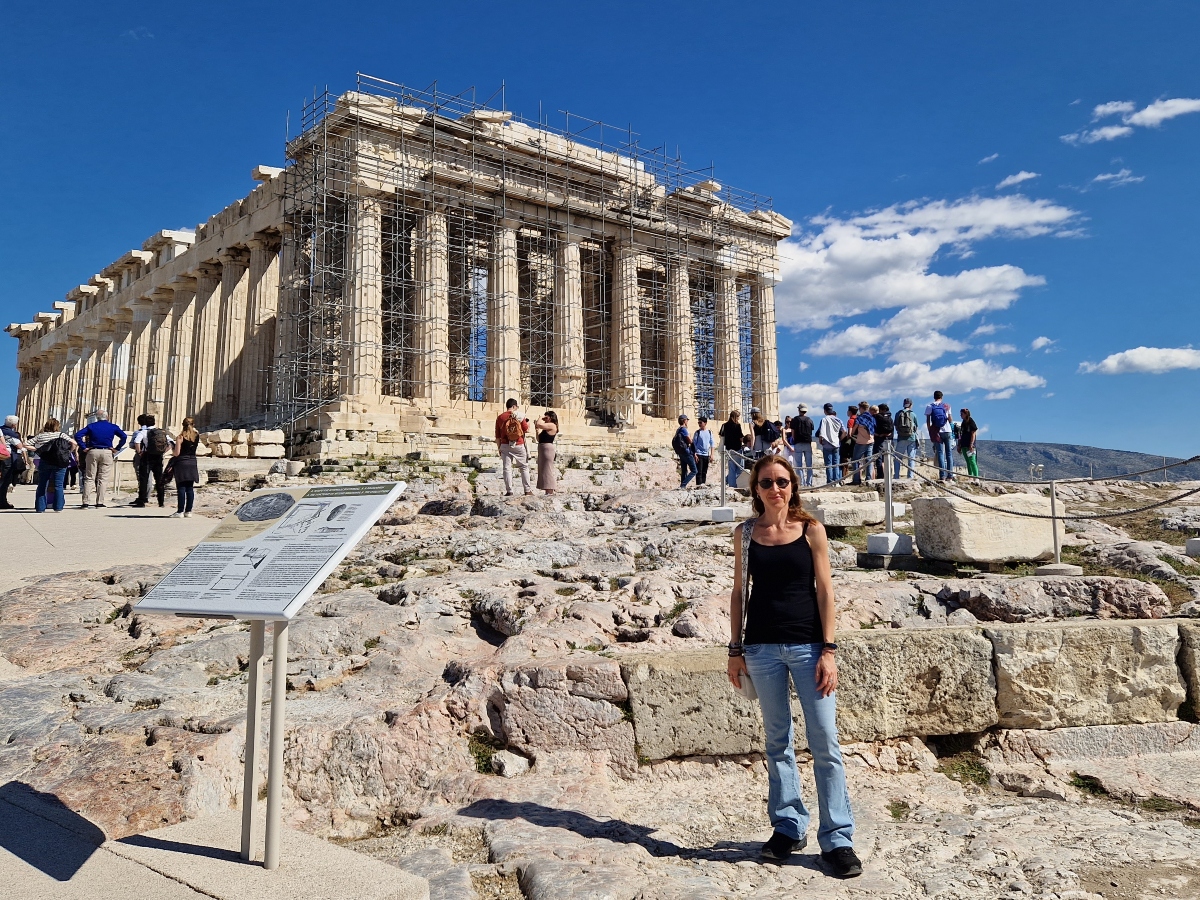
Nowadays, I usually take advantage of free days to go back, as it’s really beautiful up there – and the scaffolding has been removed!
Free days at the Acropolis
The Acropolis is free to visit on the following dates:
- 6 March – Anniversary of death of Melina Mercouri, former Minister of Culture in Greece
- 18 April – International Monuments Day
- 18 May – International Museums Day
- The last weekend of September – European Heritage Days
- 28 October – OXI day, one of the Greek national holidays
- Every first and third Sunday of the month, from November to March
Entrance to the Acropolis on the above days is free for everyone. So, regardless of your age, status or origin, you can see the Acropolis free of charge.
Apart from the Acropolis, there are six (!) more ticketed archaeological sites in Athens: The Ancient Agora, the Roman Agora, the Temple of Zeus, the Ancient Cemetery of Kerameikos, Hadrian’s Library, and Aristotle’s Lyceum. You can find more information in this article on ancient sites in Athens.

Who can visit the Acropolis for free?
Certain categories of visitors who can enter the Acropolis for free any day. The following groups of people are entitled to free entrance to the Acropolis:
- Children / young people up to the age of 25, coming from EU member-states
- Children up to the age of 18, from non-EU member states
- People from EU / EEA countries attending secondary education / vocational schools, irrespective of their age
- Students and escorting teachers from EU / EEA countries on educational visits
- Scientists licensed for purposes of photographing, studying, designing or publishing antiquities, upon presentation of the relevant license
- Members of the International Council of Museums (ICOM) and the International Council of Monuments and Sites (ICOMOS)
- Journalists
- Persons with disabilities, including one escort (only in the case of 67% disability), irrespective of their country of origin.

In order to visit the Acropolis free of charge, people in the above categories will need to present sufficient documentation to prove their age / status / country of origin.
Examples of supporting documentation include ID / passport, driver’s license, student / journalist ID, and disability certificate.
Half-price tickets for the Acropolis
There are a few categories of visitors who qualify for discounted prices:
- Citizens over 65 years of age, coming from EU / EEA countries, from October to May
- Parents joining primary education school visits, coming from EU / EEA countries
- Teachers from non-EU countries, escorting schools and other educational institutions
Again, official proof of ID and status is necessary in order to qualify for discounted entrance to the Acropolis.
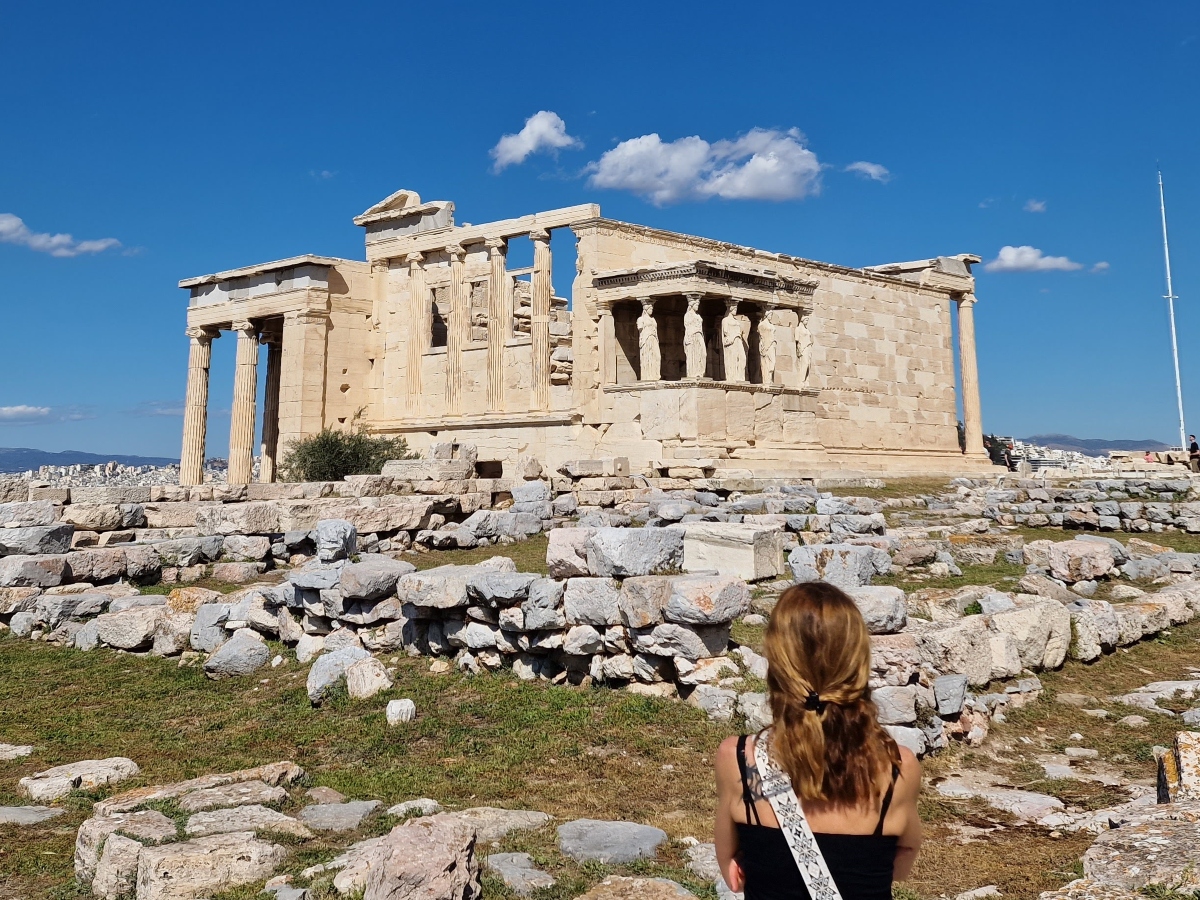
Do you have to pay to see the Acropolis?
If you are not interested in visiting the Acropolis, you can still see the ancient citadel from various spots in Athens.
My favorite spot overlooking the Acropolis is Mars Hill, known in Greek as Areios Pagos. This large rocky outcrop was the first court in Ancient Athens. It’s also known as the place where Apostle Paul delivered his famous sermon, in an effort to introduce Ancient Athenians to Christianity.
Today, Mars Hill is a popular landmark, and you will typically see dozens of tourists and locals sitting and looking at the views.
To get there, you will need to climb up some metal stairs. Make sure you have good shoes, as it’s quite slippery on the rock.
Other popular spots from where you can see the Acropolis and the Parthenon are Filopappou Hill and Nymphs Hill. Alternatively, you can head to one of the numerous rooftop bar / restaurants in central Athens, such as 360, A for Athens, Attic Urban Rooftop, and so many more!

Tips for touring the Acropolis on a free admission day
None of the free Acropolis days happen to be in the peak season (June to August). Still, on most free days, there are usually substantial queues of people who want to see the historical site up close. Many Athenians and other locals take advantage of the free admission, especially on a clear day.
What many people don’t realize is that, even on free days, you will need to queue to pick up a free ticket, and queues can be long!
My number one tip is to try to arrive early if you can. The iconic UNESCO site opens at 8 am year-round, which is a great time of day to start climbing up the hill. This will give you enough time to explore the ancient site without too many other people.
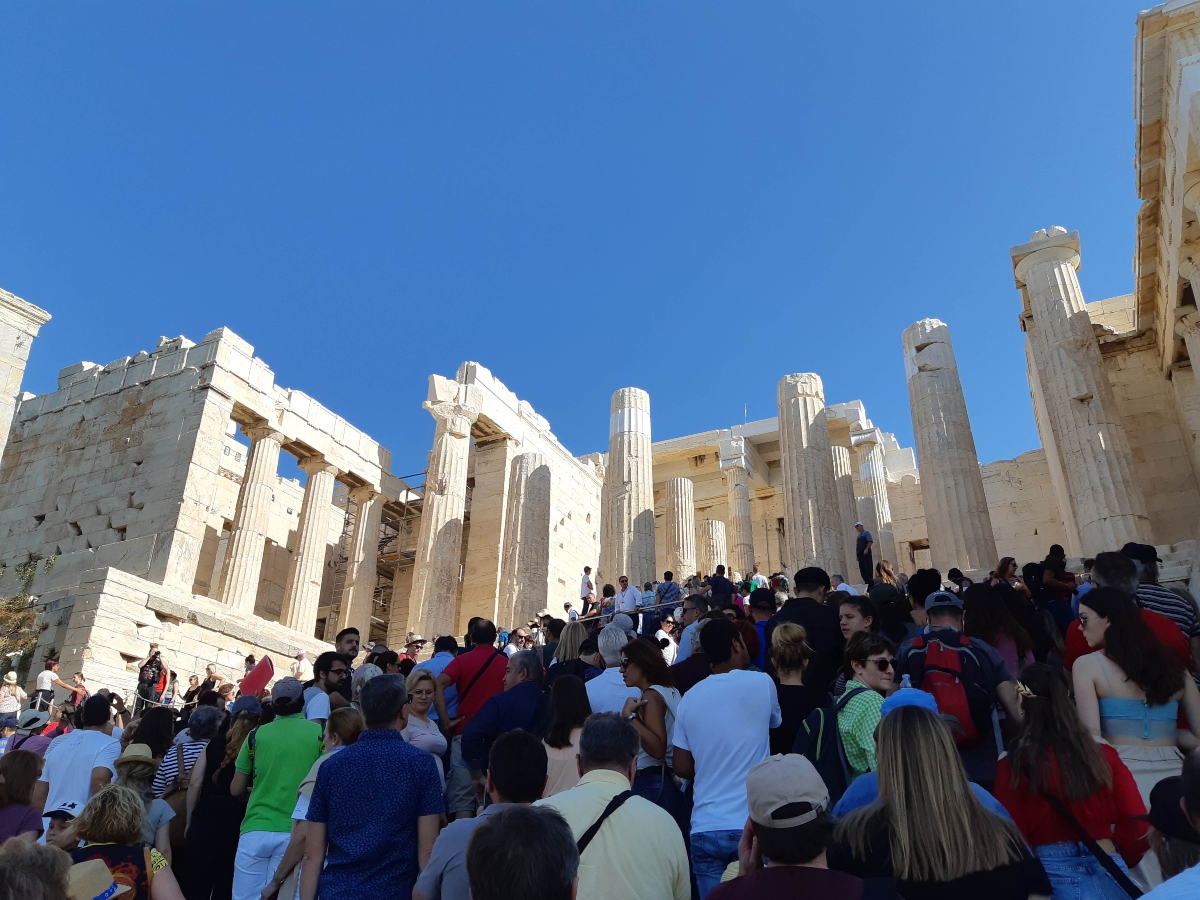
If you are visiting on a warm day, bring with you some a hat, sunglasses, sunscreen and some water – there are water fountains (and toilets) at the top of the hill, but nowhere to buy bottled water.
Or, if you visiting Athens in the off-season, make sure you bring some warmer clothes with you, as it can get very windy up on the Acropolis hill! Here is my guide with what to pack for Greece for every season that you’ll find useful.
Finally – the best spot to take a photo of you in front of the Parthenon, is right by the area where you’ll see a giant Greek flag – you can’t miss it. There’s usually a queue to go up to this area, but it never takes over a few minutes!
Is the Acropolis museum free to visit?
The Acropolis museum presents exhibits that were found in the wider area of the Acropolis, and it has a separate entrance fee. As it’s located just across the street from the ancient monument, many visitors combine the two attractions on the same day.
The days when the Acropolis Museum offers free admission are on 6 March, 25 March, 18 May and 28 October. As a rule, it gets crowded on the free days, so try to get there early if you can.
Tip: After you’ve explored the collection, relax with a coffee on the museum’s terrace, with a view to the Acropolis!
Also, have a look at this guided tour of the Acropolis and the Acropolis museum, where you’ll learn more about the history of Ancient Athens.
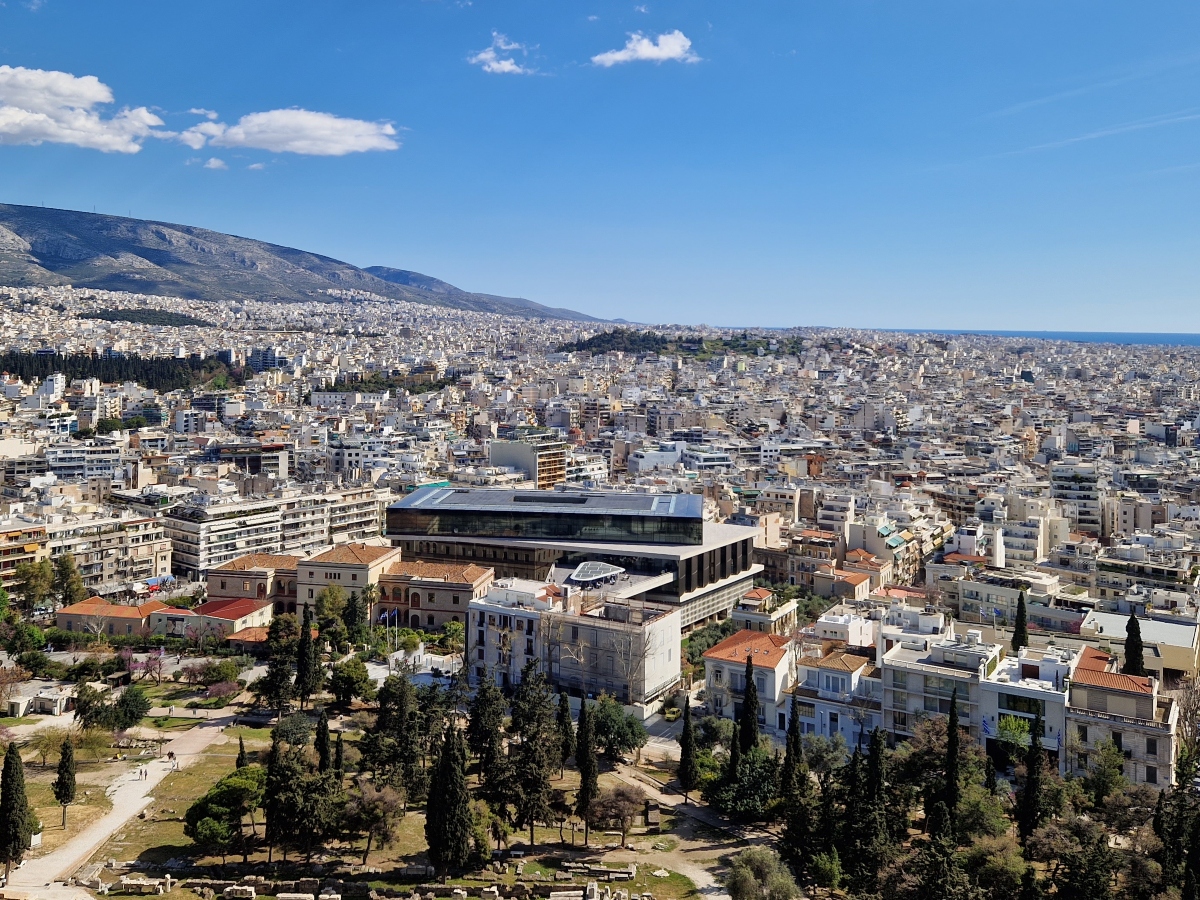
FAQs about the Acropolis of Athens
Visitors often ask the following questions about the Acropolis of Athens:
How can I see Parthenon for free?
The Parthenon is free to visit on certain days of the year. Children, students from the EU, and a few more categories of people, are entitled to free entrance to the Parthenon, the Erechtheion, and other temples and buildings in the Acropolis, any time.
How much does it cost to go up the Acropolis?
During the summer season, from April to October, entry tickets to the Acropolis cost 30 euro. They are discounted to 15 euro from November to March. Certain groups of people are entitled to free entry to the Acropolis year-round.
What is the difference between the Acropolis and the Parthenon?
The Acropolis is a large hill located in the city center of Athens. The Parthenon is a grand temple made entirely out of marble, located at the top of the Acropolis. It was dedicated to Athena, the goddess of wisdom and protector of Athens.
Is Acropolis free on Sundays?
The Acropolis is free to visit on the first and third Sunday of the month, from November to March.
Is walking up the Acropolis hard?
Most people should be able to walk up the Acropolis hill on the upward slope. There is also an elevator that you can use if you have mobility difficulties.
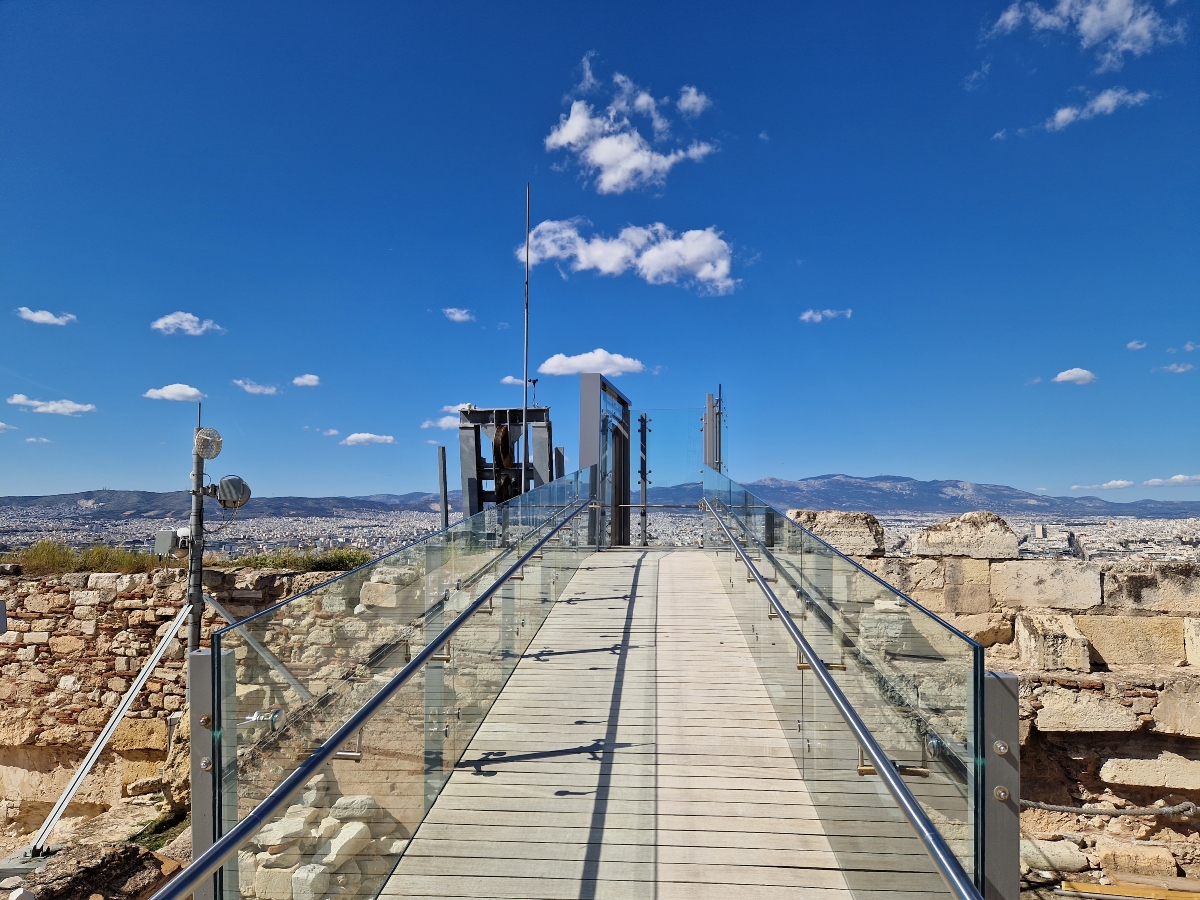
What are the visiting times for the Acropolis of Athens?
Visiting times of the Acropolis vary by season. You can visit the Acropolis at the following times:
- 1 January – 31 March: 08:00-17:00
- 1 April – 30 August: 08:00-20:00 (Exceptions: Good Friday: 12:00-17:00, Good Saturday: 08:30-15:30)
- 1 – 15 September: 08:00-19:30
- 16 – 30 September: 08:00-19:00
- 1 – 15 October: 08:00-18:30
- 16 – 31 October: 08:00-18:00
- 1 November – 31 December: 08:00-17:00
The Acropolis remains closed on 1 January, 25 March – Independence Day, Greek Easter, 1 May, 25 December – Christmas Day and 26 December. Here’s some more info about Greek celebrations throughout the year.
Can you bring water to Acropolis?
It’s best to bring a bottle of water to the Acropolis, as there are no kiosks or canteens to buy water from on top of the hill. Nevertheless, there are some water fountains, and the water is perfectly safe to drink.
Does the Acropolis have toilets?
There is a set of toilets by the entrance of the Acropolis, and there are also toilets up on the hill, behind the Parthenon.
Do you have to cover your shoulders at the Acropolis?
The Acropolis is an archaeological site in Greece, and you don’t have to cover your shoulders. You would need to cover your shoulders and knees in all monasteries in Greece, such as the majestic Meteora Monasteries.
What street is the entrance of the Acropolis on?
There are two entrances to the Acropolis. The main entrance is marked on Google Maps as Acropolis Ticket Office. There is also another entrance to the Acropolis on Areopagitou Street, marked on Google Maps as South Slope of the Acropolis of Athens.
Is the Agora inside the Acropolis?
The Ancient Agora is located close to the Acropolis, but it’s a separate ancient site with its own entrance. Here is some more information: Ancient Agora of Athens.
Are there any free sites you can visit in Athens?
Yes, there are several free attractions in Athens, such as Mars Hill, Lycabettus Hill and the National Gardens. Also, have a look at those hidden gems in Athens.
 Hi! I’m Vanessa from Athens, and I hope you’ve enjoyed this guide on how to visit the Acropolis for free. If you are traveling on a budget, you can also try this beautiful walking route and experience Ancient Athens for free! Follow me on my social media:
Hi! I’m Vanessa from Athens, and I hope you’ve enjoyed this guide on how to visit the Acropolis for free. If you are traveling on a budget, you can also try this beautiful walking route and experience Ancient Athens for free! Follow me on my social media:
- Facebook page and very active Facebook group
- Amazon

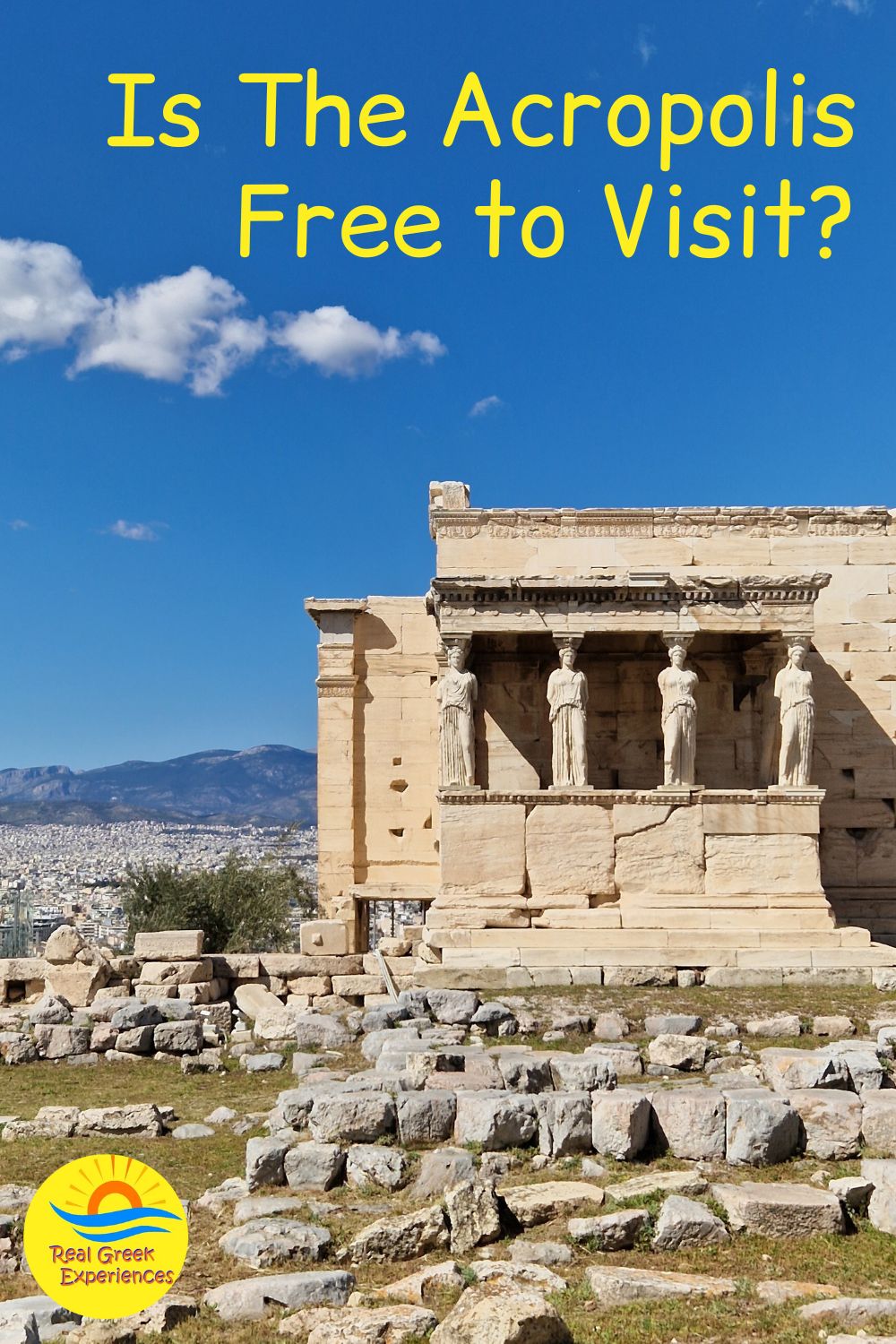
Thank you very much for this blog post, we want to visit at least two attractions on May 18 to save some money!
Actually the free admission also requires the ticket. Please could you put the link for purchasing here?
Thank you very much for your good information. Much helpful. My family and I are waiting flight to visit Athens. Thanks for your information we would save 30 Eur by free entrance for Acropolis. But I will spend the money for other purpose. I wish Greece overcome the economic difficulties. We never forget the help of Greece in the Korean war.
Thank you so much for your message! I might go to the Acropolis myself this Sunday as well:) Enjoy Athens!